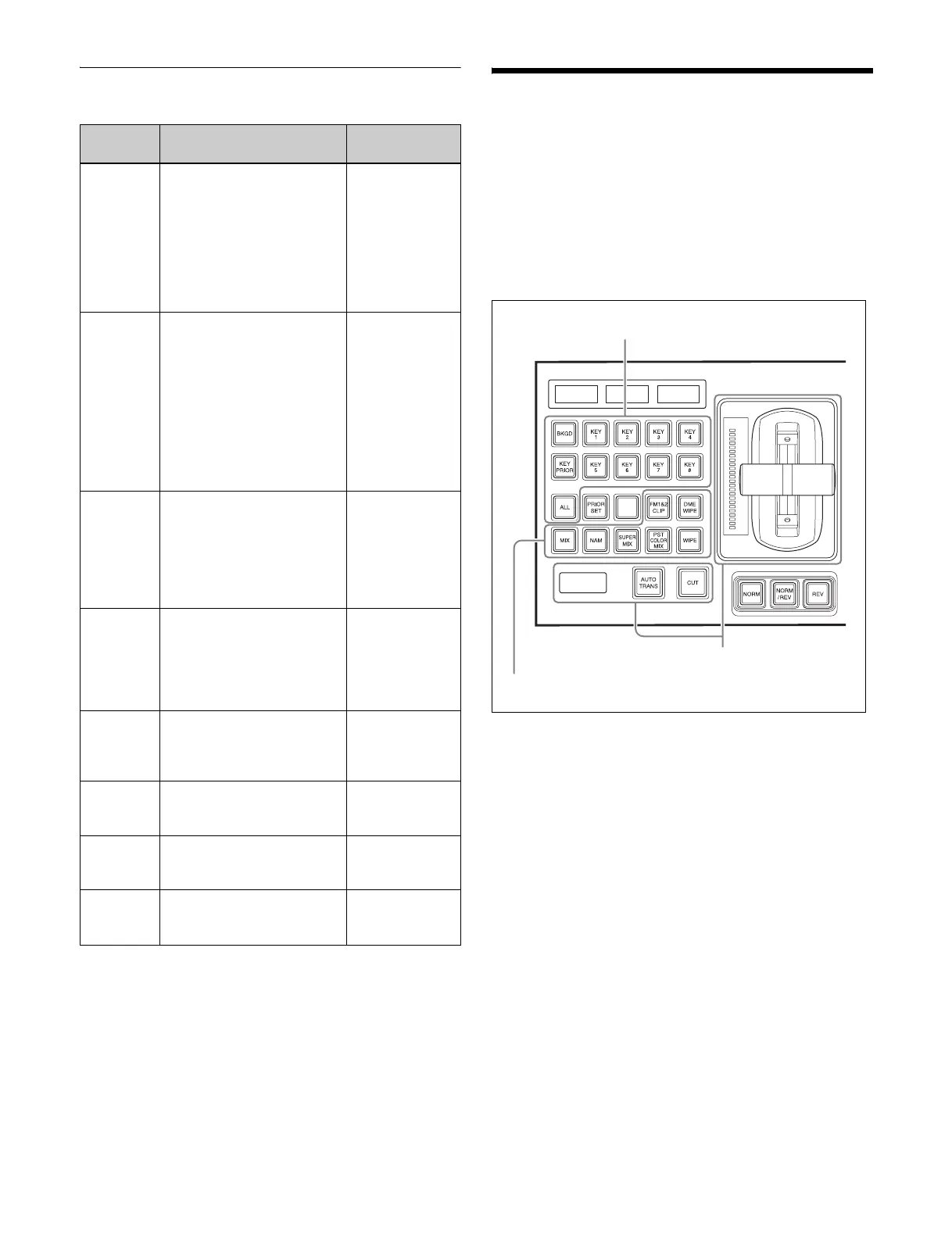84
Transition Type
Basic Operation for
Transitions
Transition operations are performed using the transition
control block. Only background transitions can be
executed on the simple-type transition control block.
Operations on the transition control block
Transition control block
1
Select the background video using the background A
bus cross-point buttons in the cross-point control
block.
2
Select the part of the image to change in a transition
using the next transition selection buttons in the
transition control block.
To change the background: Press the [BKGD]
button, turning it on.
To insert or remove a key: Press the [KEY1] to
[KEY8] buttons, turning them on.
To enable the key overlay order (priority) setting
after the transition: Press the [KEY PRIOR]
button, turning it on.
To remove all the currently inserted keys: Press the
[BKGD] button twice in rapid succession
(available only when double-press operations are
enabled in the Setup menu).
To change preset keys and backgrounds
simultaneously: Press the [ALL] button.
Type Description Independent
key transitions
Mix The new video progressively
fades in over the current
video. The sum of the two
video outputs is maintained
at a constant, with the output
of each at 50% at the mid-
point of the transition (i.e.,
when the fader lever is in the
center position).
Selectable
NAM (non-
additive
mix)
The current video and new
video signals are compared,
and the signal with the
higher luminance level is
given priority in the output.
The signals are compared at
the mid-point of the
transition when both signals
are at 100%, at which point
the signal with the higher
luminance level is output.
Not selectable
Super mix The current video is
maintained at 100% output
for the first half of the
transition as the new video
is mixed while increasing
progressively to 100% at the
mid point of the transition.
Not selectable
Preset
color mix
A color matte (unpatterned
display) is inserted during
the transition where the
current video is switched to
the new video in a two-stage
transition.
Not selectable
Wipe A wipe switches from the
current video to the new
video using a predetermined
pattern.
Selectable
DME wipe The current video switches
to the new video, similar to a
wipe, using a DME effect.
Selectable
Clip
transition
Plays back a frame memory
clip (movie) linked to a mix
or wipe transition.
Not selectable
Cut The new video
instantaneously replaces the
current video.
Selectable
Next transition selection buttons
Transition execution section
Transition type selection buttons

